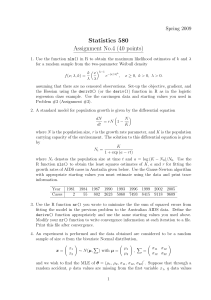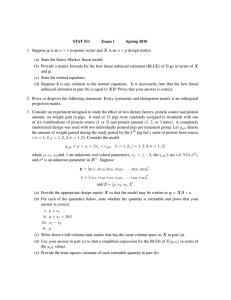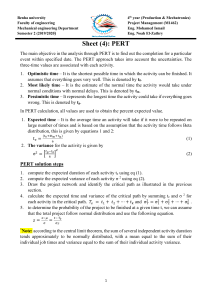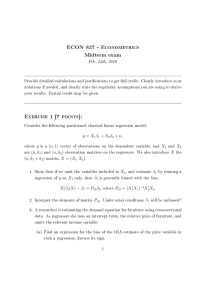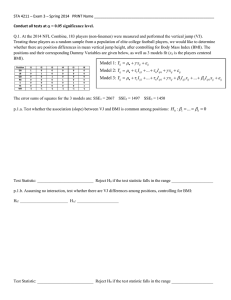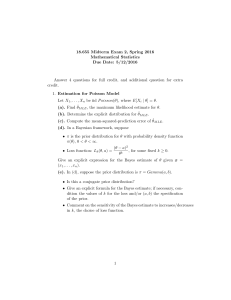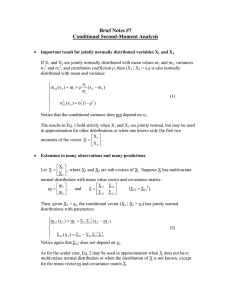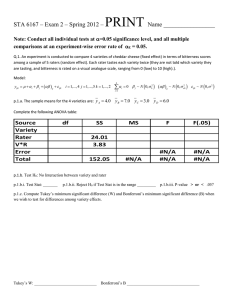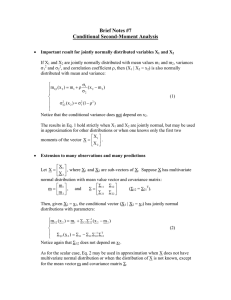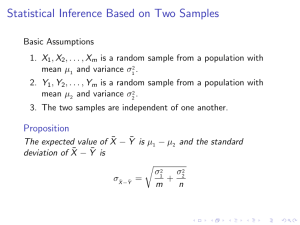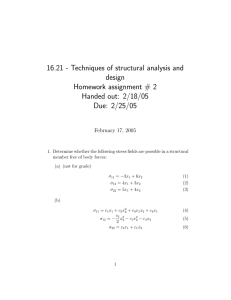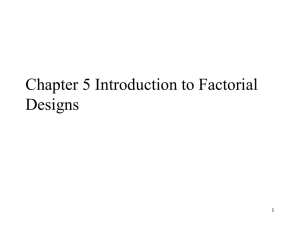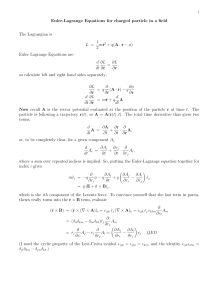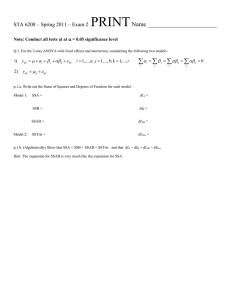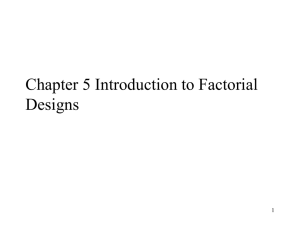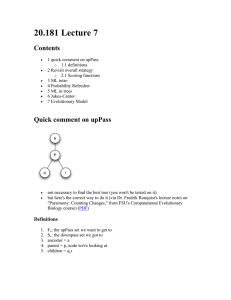STAT 510 Homework 6 Due Date: 11:00 A.M., Wednesday, March 2
advertisement
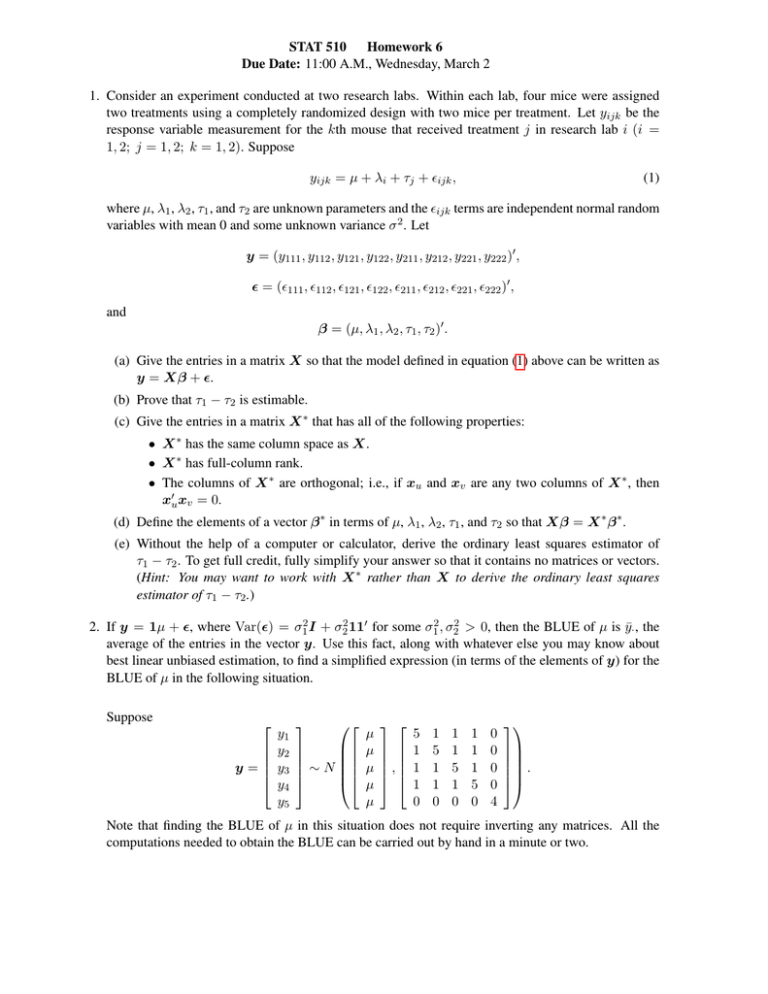
STAT 510 Homework 6 Due Date: 11:00 A.M., Wednesday, March 2 1. Consider an experiment conducted at two research labs. Within each lab, four mice were assigned two treatments using a completely randomized design with two mice per treatment. Let yijk be the response variable measurement for the kth mouse that received treatment j in research lab i (i = 1, 2; j = 1, 2; k = 1, 2). Suppose yijk = µ + λi + τj + ijk , (1) where µ, λ1 , λ2 , τ1 , and τ2 are unknown parameters and the ijk terms are independent normal random variables with mean 0 and some unknown variance σ 2 . Let y = (y111 , y112 , y121 , y122 , y211 , y212 , y221 , y222 )0 , = (111 , 112 , 121 , 122 , 211 , 212 , 221 , 222 )0 , and β = (µ, λ1 , λ2 , τ1 , τ2 )0 . (a) Give the entries in a matrix X so that the model defined in equation (1) above can be written as y = Xβ + . (b) Prove that τ1 − τ2 is estimable. (c) Give the entries in a matrix X ∗ that has all of the following properties: • X ∗ has the same column space as X. • X ∗ has full-column rank. • The columns of X ∗ are orthogonal; i.e., if xu and xv are any two columns of X ∗ , then x0u xv = 0. (d) Define the elements of a vector β ∗ in terms of µ, λ1 , λ2 , τ1 , and τ2 so that Xβ = X ∗ β ∗ . (e) Without the help of a computer or calculator, derive the ordinary least squares estimator of τ1 − τ2 . To get full credit, fully simplify your answer so that it contains no matrices or vectors. (Hint: You may want to work with X ∗ rather than X to derive the ordinary least squares estimator of τ1 − τ2 .) 2. If y = 1µ + , where Var() = σ12 I + σ22 110 for some σ12 , σ22 > 0, then the BLUE of µ is ȳ· , the average of the entries in the vector y. Use this fact, along with whatever else you may know about best linear unbiased estimation, to find a simplified expression (in terms of the elements of y) for the BLUE of µ in the following situation. Suppose y= y1 y2 y3 y4 y5 ∼ N µ µ µ µ µ , 5 1 1 1 0 1 5 1 1 0 1 1 5 1 0 1 1 1 5 0 0 0 0 0 4 . Note that finding the BLUE of µ in this situation does not require inverting any matrices. All the computations needed to obtain the BLUE can be carried out by hand in a minute or two. 3. The following questions refer to the slide set 12 entitled The ANOVA Approach to the Analysis of Linear Mixed-Effects Models. (a) Derive the expected mean square for ou(xu, trt) for the ANOVA table on slide 9 using the technique illustrated on slides 15 through 17. (b) Repeat part (a) using the technique alluded to on slide 19. You may assume t = 2, n = 2, and m = 2 to make things easier to visualize. Page 2


